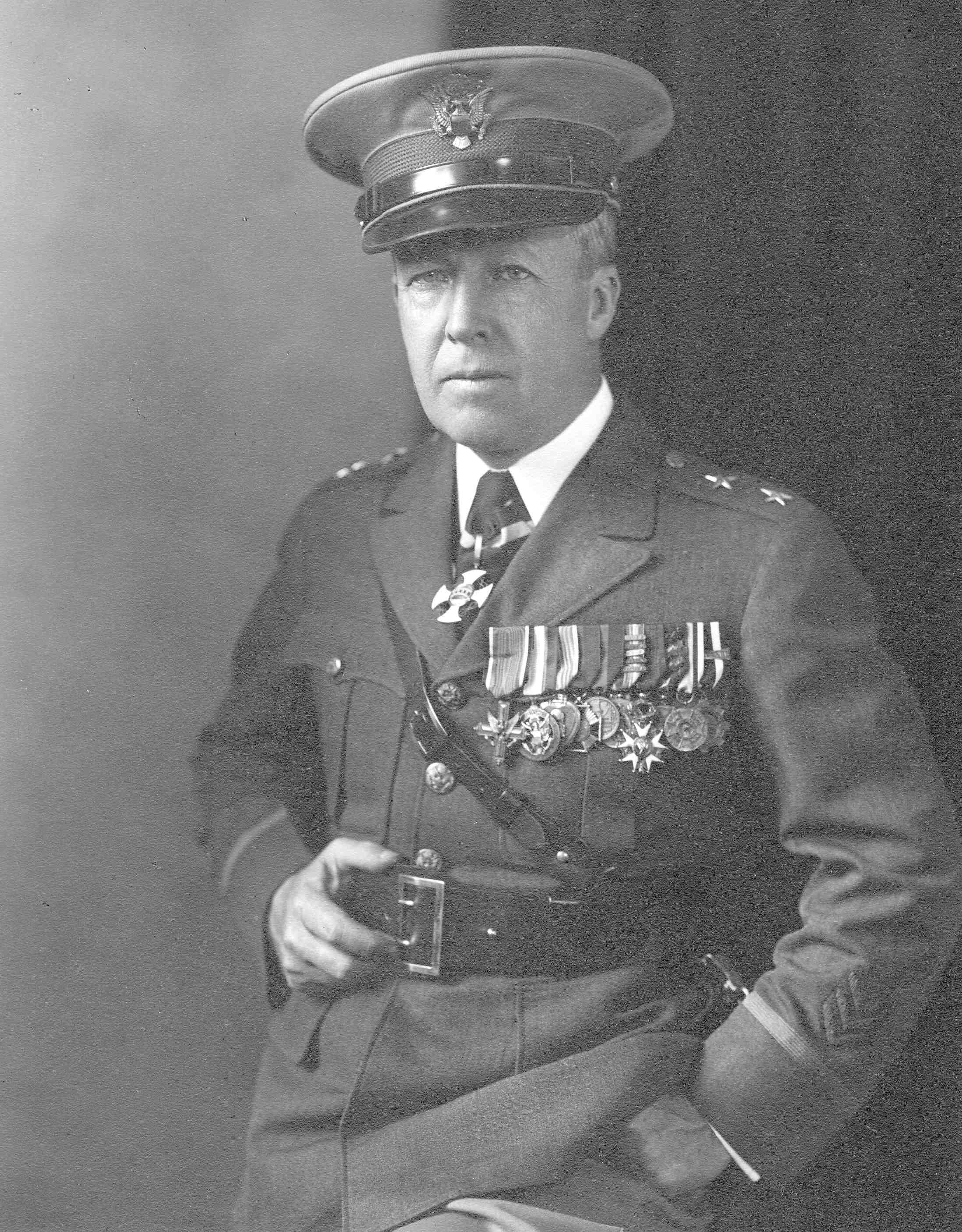Search Registry
Disclaimer: Information in the Registry is unofficial and not intended as a substitute for any official government record of military service.
George E. Leach |
|
| Born | July 14, 1876, Cedar Rapids, IA |
| Gender | Male |
| Parents | |
| Schools Attended | Minneapolis Central HS; University of Minnesota Law School |
| Branch of Service | Army |
| Additional Identifiers | Commissioned or Warrant Officer National Guard Wounded in Service |
| Service Timeframe | 1905 - 1941 |
| War/Conflict | Mexican Border/Punitive Expedition 1916 World War One 1914-1918 |
| Principal Units and Locations | 151st Field Artillery |
| Military Awards and Decorations | Distinguished Service Cross; Purple Heart; French Legion of Honor |
 Major General Leach as Chief of the National Guard Bureau in Washington, DC, 1931. | |
NarrativeMajor General George E. Leach was an extraordinary man with a distinguished record of service in the military, in politics, and even in the Olympics. His son, Bill, remembers him as someone who never met a minute of the day he didn’t want to fill. Although born in Iowa, George Leach was raised in Minneapolis, attended public schools there and graduated from the University of Minnesota Law School in 1897, after which he started a career in the insurance business by inspecting grain elevators in Minnesota and the Dakotas. Leach’s father had served in the Civil War as Adjutant for the famous 1st Minnesota Volunteer Infantry. George’s own military experience began in 1905 when he enlisted in "B" Battery of the 1st Minnesota Field Artillery, Minnesota National Guard. He quickly received a commission to Second Lieutenant and was promoted to Captain in 1908. He completed Command and General Staff College in 1916. In the June 1916 the Minnesota National Guard was ordered to active federal service to help deal with problems on the border with Mexico, and sent to Camp Llano Grande near Mercedes, Texas. Leach, now a Major, commanded the 2nd Battalion of the 1st Minnesota Field Artillery Regiment, and in August was given command of the whole regiment. The regiment returned to Minnesota in late February 1917, but with the declaration of war against Germany on April 6, 1917, they were quickly ordered to state service and then into federal service. The unit was re-designated as the 151st Field Artillery Regiment and assigned to the new 42nd “Rainbow” Infantry Division, composed of four regular Army regiments and National Guard units from 26 states. The 42nd was one of the first American divisions to reach the battlefield. Under Leach's leadership, the 151st rendered distinguished combat service in France, earning five campaign stars: Defensive Sector (Lorraine), Champagne-Marne, Aisne-Marne, St. Mihiel, and Meuse-Argonne. While with the 42nd Division, the regiment worked under General Douglas McArthur, who regarded Leach as the finest artillery officer in the Army. After the war, Colonel Leach remained in command of the 151st FA and resumed his work in the insurance business as a manager for the St. Paul Fire & Marine Insurance Company. In 1923 he was promoted to Brigadier General and given command of the 59th Field Artillery Brigade, Minnesota National Guard. Leach was elected mayor of Minneapolis as a Republican for six two-year terms: in 1921, 1923, 1925, 1927, 1937, and 1939. He twice ran for governor (1926 and 1938) but was not elected. While mayor, Leach fought hard against the spreading influence of the Ku Klux Klan in Minnesota. Leach was a first-rate athlete and an excellent skier. He managed the very first U.S. Olympic Ski Team in 1924, and was the National Ski Association representative to the ski congress, which met during the Olympics and led to the creation of the International Ski Federation. He was inducted into the National Ski Hall of Fame in Ishpeming, Michigan, 14 years after his death. In 1931 Leach was given the temporary rank of Major General and appointed Chief of the National Guard Bureau in Washington DC. He served until 1935 when he resumed his rank of Brigadier General and returned to Minnesota to again assume command of the 59th Field Artillery Brigade. In 1937 he was elected president of the National Guard Association of the United States. From 1940 to 1941 Leach commanded the 34th Infantry Division and was again promoted to Major General. While he commanded the division, the 34th received its notification of federal activation and underwent rigorous training and preparations for its eventual participation in WWII. He retired from the Army in 1941, highly regarded by the many soldiers who had served with him over the years. Leach owned George E. Leach, Inc, a vending machine company. He also served as Chairman of the National Automatic Merchandising Association. In 1924 he married Anita M. Churcher, whom he met in Germany after WWI while serving on occupation duty and she served with the Y.M.C.A. They had two children. He passed away in Los Angeles, California, on July 17, 1955, age 79, and is buried at Ft. Snelling National Cemetery. | |
